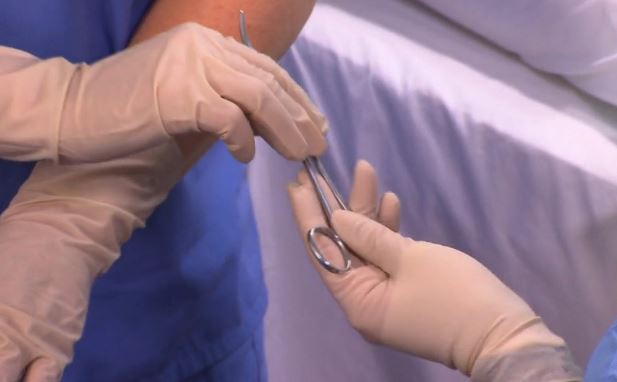

Library > Medical Assisting > Surgical Procedures > Assist with Minor Surgical Procedures
Try Simtics for free
Start my free trialAssist with Minor Surgical Procedures

Materials Included:
-

-

-

-

-

Check our pricing plans here
Unlimited streaming.
As a nurse or medical assistant in a doctor's office, you may be asked to assist the physician with minor surgery such as irrigating and cleaning a wound, suturing a laceration, or removing a foreign entity or a small growth. This module explains how to prepare for, and safely assist with, minor surgical procedures. Including both Learn and Test modes, the online simulator offers two scenarios that test your ability to assist with minor surgical procedures. Practice the steps of the procedures as often as you want until you are confident. This module is based on the entry-level competencies for which the Commission on Accreditation of Allied Health Education Programs (CAAHEP) and Accrediting Bureau of Health Education Schools (ABHES) test the Medical Assistant.
You’ll learn
- relevant medical terminology
- how to apply the principles of an aseptic technique
- how to maintain a sterile field during minor surgical procedures
- how to assist the physician during a minor surgical procedure
- how to apply a dressing after a minor surgical procedure
- to visualize the anatomical structures and components involved in the simulated procedures, using our anatomy illustrations and 3D model
- to practice and perfect your skills in assisting the physician during a minor surgical procedure, including the tray setup, draping the area, assisting throughout surgery, applying the dressing, and completing the procedure
- correct recording and reporting procedures
- much more (see Content Details for more specific information)
- Describe pre-procedure considerations for preparing for, and assisting with, surgical procedures.
- Describe and demonstrate the preparation for minor surgical procedures.
- Understand and apply the principles of an aseptic technique.
- Describe common minor surgical procedures and specify the role of the medical assistant in those.
- Describe and demonstrate how to maintain a sterile field during minor surgical procedures.
- Describe and demonstrate how to assist effectively and correctly with minor surgical procedures.
- Describe and demonstrate how to apply a dressing after a minor surgical procedure.
- Describe and demonstrate correct post-procedure considerations.
- Define and demonstrate correct recording and reporting procedures.
- Define and use related medical terminology.
- Understand and apply Occupational Safety & Health Administration (OSHA) guidelines.
- Explain the Patient Privacy Rule (HIPAA), Patient Safety Act, and Patients' Bill of Rights.
The SIMTICS modules are all easy to use and web-based. This means they are available at any time as long as the learner has an internet connection. No special hardware or other equipment is required, other than a computer mouse for use in the simulations. Each of the SIMTICS modules covers one specific procedure or topic in detail. Each module contains:
- an online simulation (available in Learn and Test modes)
- descriptive text, which explains exactly how to perform that particular procedure including key terms and hyperlinks to references
- 2D images and a 3D model of applied anatomy for that particular topic
- a step by step video demonstration by an expert
- a quiz
- a personal logbook that keeps track of all the modules the learner has studied and how long
For more details on features and how your students can benefit from our unique system, click here.









